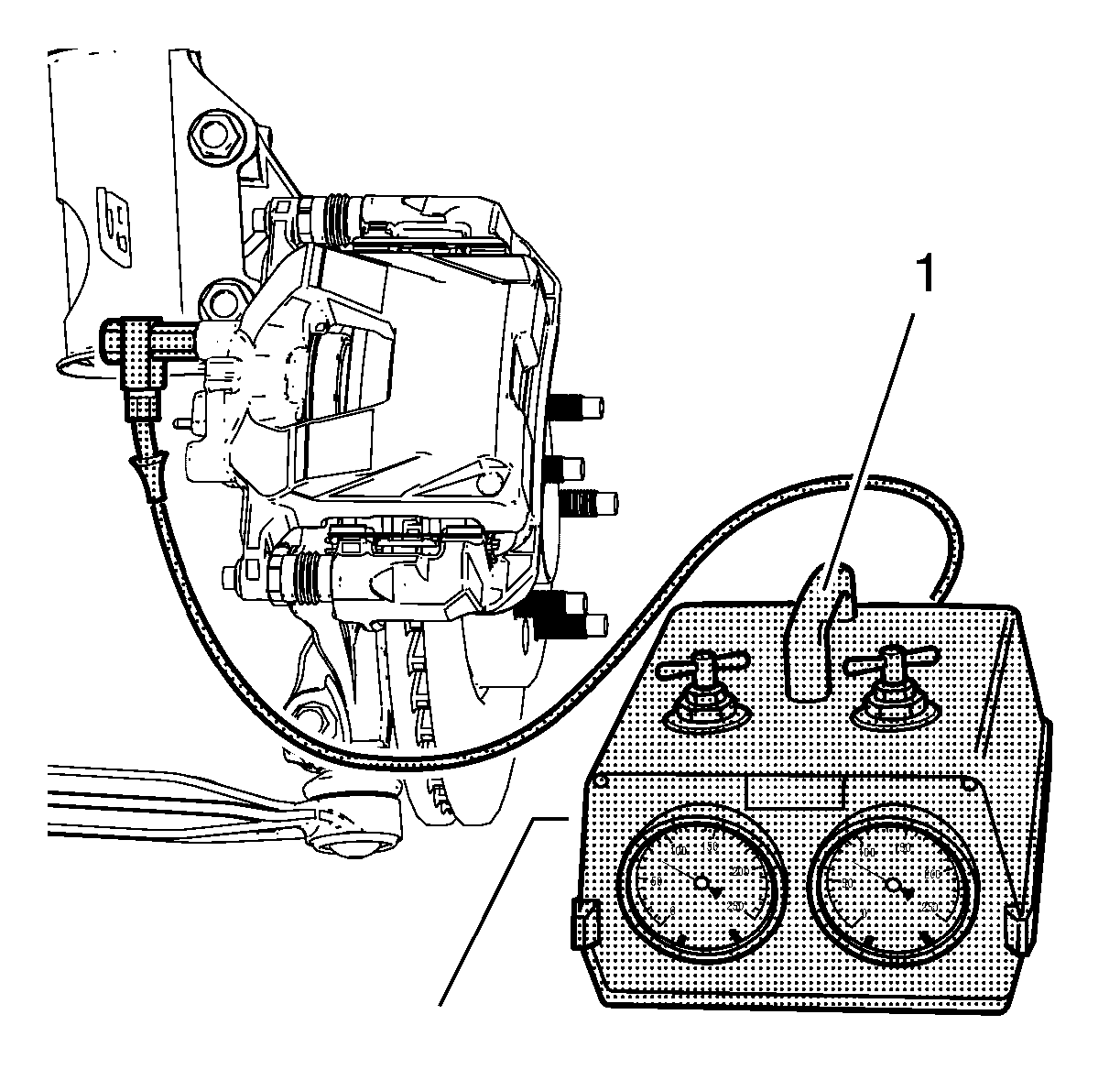For 1990-2009 cars only
Special Tools
CH-558-10 Pressure Gauge
For equivalent regional tools, refer to Special Tools.
Note:
• Engine temperature, accessory load, and elevation level will affect engine vacuum. • Vacuum readings will decrease by approximately 2.7 kPA (0.8 in Hg) for every 305 m (1000 ft) of elevation above sea level.

Definition: If the brakes on diesel engine vehicles are operated for a long period of time, e.g. when approaching traffic lights or a traffic jam, the vacuum may be used up. The pedal travel is shortened, but will quickly return to the original pedal travel once the vacuum has been built up. Drivers often describe this phenomenon as follows: "When the brakes are operated for a long time, the brake pedal goes right to the floor" and/or as "Spongy brake pedal". On diesel vehicles, this is no cause for concern, as the pressure in the brake system is rising at this point. This can be demonstrated by connecting CH-558-10 gauge (1) to the brake calliper
- Reduce negative air pressure in brake booster
- Check brake booster
Note: Ignition OFF.
Press brake pedal repeatedly
| • | Press down brake pedal and maintain pressure |
| • | Start engine |
